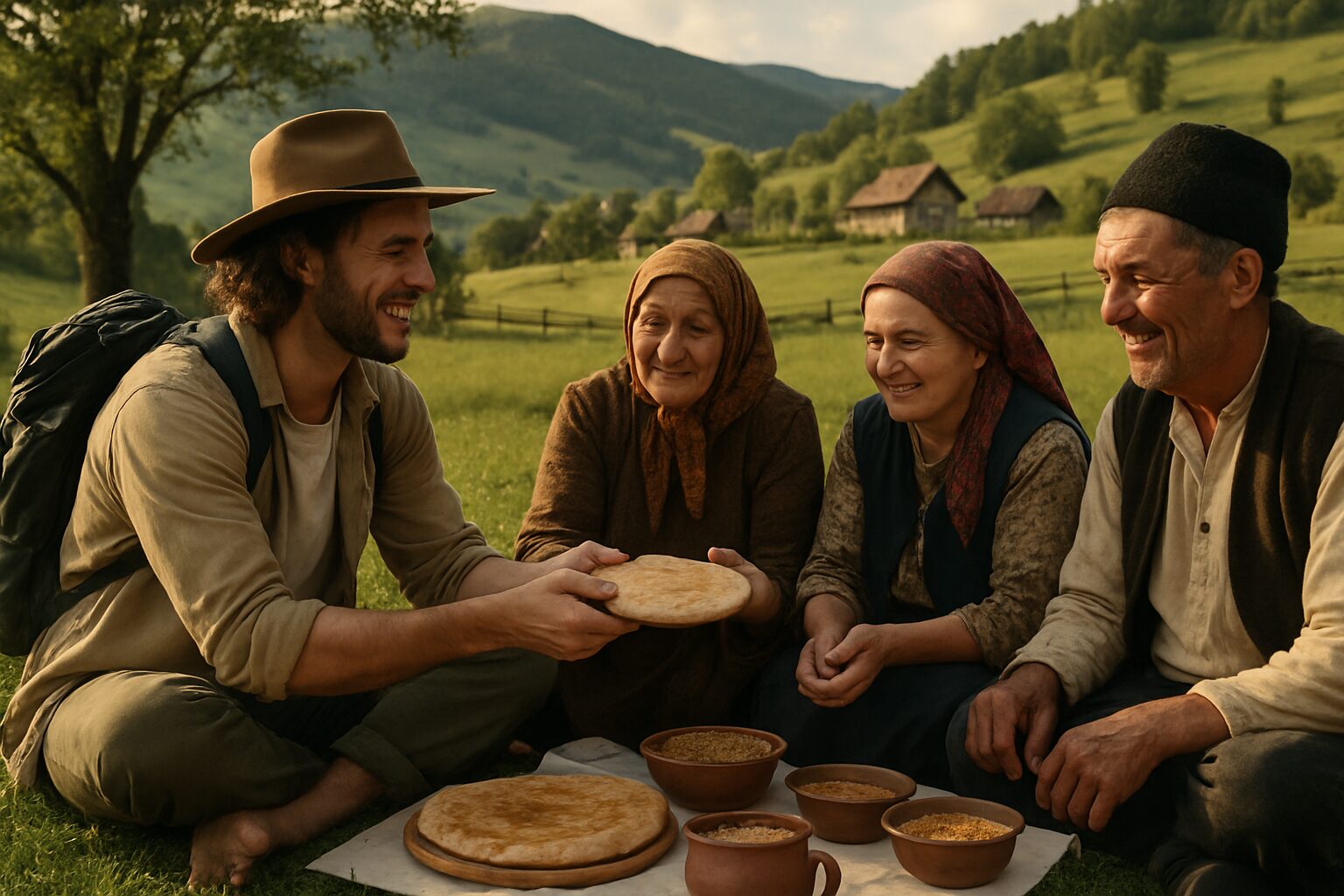In today’s fast-paced world, where speed and efficiency often overshadow experience and connection, slow travel emerges as a refreshing antidote. By prioritizing meaningful engagement with destinations and emphasizing depth over breadth, slow travel invites a transformative journey that deeply benefits well-being. Far from the whirlwind itineraries countless travelers endure, this mindful approach allows individuals to immerse themselves in local cultures, fostering mental clarity and emotional balance. With growing awareness around sustainable tourism and the desire to support authentic local economies, slow travel gains momentum, offering a holistic way to explore the world. It’s a conscious decision to savor every moment, from wandering cobblestone streets to engaging in traditional Slow Food meals, tapping into the essence of places. Organizations such as National Geographic and Intrepid Travel highlight its environmental and cultural advantages, reinforcing how slowing down enhances not only personal wellness but also global awareness. Within this new paradigm, companies like Airbnb promote longer stays that support community connections, while eco-conscious travelers increasingly turn to platforms like REI and EcoTravel for sustainable adventures. One’s journey becomes less about checking off landmarks and more about cultivating lasting memories and inner peace, reflecting an evolution in humanity’s relationship with travel and time.
Enhanced Cultural Immersion: Unlocking Deeper Connections Through Slow Travel
Slow travel bestows the gift of truly knowing a place rather than just passing through it. By lingering in one location, travelers gain access to nuanced cultural experiences often missed during hurried tours. This in-depth engagement involves roaming local markets, sharing stories with residents, and understanding traditions beyond surface-level interactions.
For instance, rather than dashing through popular city attractions, slow travelers might spend mornings at a neighborhood café, catching snippets of conversation and practicing the local language. This approach nurtures authentic bonds and a genuine appreciation of everyday life. Guides from Lonely Planet emphasize how slow travel promotes transformative experiences by eschewing tourist hotspots in favor of community-rooted encounters.
Core activities supporting cultural immersion include:
- Participating in regional festivals and ceremonies to witness living heritage.
- Cooking local recipes with residents inspired by the Slow Food movement.
- Volunteering or joining cultural workshops to engage meaningfully.
- Shopping in artisan markets to support sustainable local crafts.
These experiences cultivate respect and understanding while fostering mindful presence. Research highlighted by Happiness on the Way reveals that such deep cultural immersion can enhance empathy and reduce travel-related stress, enriching emotional well-being.

| Aspect | Fast Travel Experience | Slow Travel Experience |
|---|---|---|
| Duration in destination | Hours or days | Weeks or months |
| Interaction quality | Superficial tourist encounters | Meaningful connections with locals |
| Cultural understanding | Basic sightseeing | Deep appreciation of customs and traditions |
| Support for local economy | Chain hotels, international franchises | Locally owned accommodations and businesses |
Authentic Stories from GlobeSailor and Vagabond Travelers
Travelers affiliated with GlobeSailor and Vagabond report feeling more fulfilled by choosing extended stays aboard sailboats or in rural villages respectively. Their stories often highlight moments of unexpected friendship and genuine cultural exchange that enrich their journeys emotionally and spiritually, underscoring slow travel’s unique power to deepen experiences.
By slowing down, one becomes part of the locale’s fabric rather than a fleeting observer. Sites like Curious Little Trips document these profound interactions, recommending this suited approach for those seeking travel not just as a spectacle but as a path to meaningful human connection.
Improved Mental Health and Wellbeing Through Mindful Slow Travel
The accelerated pace of modern life often manifests in stress and anxiety. Traditional intensive travel can exacerbate these feelings due to packed itineraries and time constraints. By contrast, slow travel offers a calm refuge.
Adopting a leisurely pace allows time for mindfulness practices and mental restoration, akin to how daily yoga routines nurture inner peace. It reduces travel exhaustion by eliminating the pressure to “see everything,” cultivating an environment where the mind can genuinely relax.
According to wellness experts and supported by resources like Serenity Trips’ mental health guides, slow travel helps individuals:
- Lower cortisol levels by avoiding stressful commuting and crowded tourist hubs.
- Enhance mental clarity by immersing in serene landscapes renowned for their calming effects.
- Promote emotional balance through meaningful human connections and cultural engagement.
- Develop mindfulness, increasing gratitude and contentment during travel experiences.
For example, spending a week in a quiet village surrounded by nature or participating in local meditation events amplifies a traveler’s psychological well-being. Destinations focused on holistic wellness such as those promoted by MtnVenture combine adventure with quiet reflection, illustrating the blurring lines between travel and self-care.
| Wellbeing Factor | Fast-Paced Travel | Slow Travel |
|---|---|---|
| Stress Levels | High, due to time pressure and constant movement | Reduced through relaxed schedules |
| Sleep Quality | Often disrupted by travel fatigue | Improved via consistent routines |
| Mental Clarity | Less opportunity for reflection | Fostered by slower pace |
| Emotional Resilience | Weakened by travel stress | Strengthened through mindful engagement |
Companies like Serenity Trips curate destinations ideal for slow travelers seeking mental reprieve. Their tailored activities may include gentle hiking, community yoga, or mindful culinary experiences, blending mental health with cultural exploration.
Environmental Sustainability and Responsibility in Slow Travel Practices
Slow travel’s impact extends well beyond personal benefits. Its emphasis on reduced movement and longer stays inherently promotes environmentally responsible tourism. As climate concerns dominate global discourse in 2025, slow travel aligns with the growing shift toward sustainable living advocated by institutions like EcoTravel and Globetrotters worldwide.
Key environmental advantages include:
- Lower carbon footprint by minimizing air travel and transit frequency.
- Promotion of eco-friendly accommodations, such as green-certified Airbnb hosts.
- Support for local economies, decreasing reliance on mass tourism infrastructures.
- Encouragement of responsible wildlife viewing and nature conservation efforts.
Slow travel often involves walking, cycling, or public transportation—activities endorsed by companies like REI that foster a healthy lifestyle and sustainability. These choices underpin travelers’ responsibility to protect destinations as shared heritage.
This approach gains further relevance as studies show tourism-related emissions continue to rise, necessitating new paradigms—making slow travel one of the practical solutions for minimizing environmental impact without sacrificing enriching experiences.

| Environmental Factor | Conventional Travel | Slow Travel |
|---|---|---|
| Transportation Emissions | High – frequent flights and car rentals | Low – use of trains, bikes, and walking |
| Accommodation Impact | Often chain hotels with high resource use | Locally owned, eco-certified lodgings |
| Waste Generation | Increased from disposable tourism products | Reduced through eco-awareness and local support |
| Support for Conservation | Limited or incidental | Active participation and funding |
Slow Travel as a Catalyst for Eco-Conscious Behavior
By encouraging visitors to slow their pace, slow travel nurtures a mindset fostering conservation and respect. Travelers who embrace this approach frequently adjust their daily habits beyond the trip — from reducing plastic use to advocating for sustainable policies. Resources such as Serenity Trips on sustainable travel provide valuable tips on making travel a positive force for ecological stewardship.
Moreover, companies like National Geographic and Intrepid Travel lead initiatives focused on low-impact excursions, encouraging meaningful environmental engagement and education to inspire future generations of travelers.
Uncovering Authentic Experiences and Hidden Gems Beyond Tourist Trails
One of the most rewarding aspects of slow travel is the freedom to discover authentic experiences that lie off conventional tourist pathways. When unbound by rigid schedules, travelers explore lesser-known locales — from remote villages to tranquil natural spots — that reveal local stories and traditions.
The appeal of finding hidden gems is amplified by slow travel’s allowance for spontaneous discovery and a deeper sense of place. In these moments, connections deepen, often leading to treasured memories. Platforms like Celebrate Life’s Adventures and In Your Travel spotlight travelers sharing anecdotes of uncovering unexpected trails, secluded cafes, or unique cultural encounters.
Encouraging authentic explorations includes:
- Seeking out small-scale community festivals rarely promoted online.
- Engaging in workshops focusing on traditional crafts or local storytelling.
- Exploring natural parks and reserves with minimal tourist footfall.
- Partaking in family-run culinary experiences featuring unique regional recipes.
| Traditional Tourism | Authentic Slow Travel |
|---|---|
| Planned itineraries covering major landmarks | Flexible schedules prioritizing local culture |
| Crowded tourist spots | Peaceful, less frequented areas |
| Tourist-centric services | Community-based initiatives and businesses |
| Standardized cultural showcases | Immersive, spontaneous cultural participation |
Companies like Airbnb increasingly offer stays in unique homes deeply embedded in local neighborhoods, helping travelers to further connect with their surroundings in meaningful ways. Such experiences complement the Slow Food ethos, allowing visitors to savor locally sourced ingredients and celebrate culinary heritage.
Adventurous Spirit and Personal Growth Fostered by Slow Travel
While the term “slow” might suggest caution, slow travel actually encourages a vibrant spirit of adventure rooted in fearless exploration. Without the constraints of tight plans, travelers can embrace unpredictability, venturing off beaten paths and welcoming new experiences within a safer, more sustainable rhythm.
This openness fosters significant personal growth, including:
- Expanding adaptability by navigating unfamiliar environments with patience.
- Strengthening emotional resilience when balancing comfort zones with new challenges.
- Encouraging creativity inspired by immersion in diverse cultures and natural settings.
- Enhancing social skills through intentional, meaningful interactions with locals and other travelers.
For example, partnering with agencies like Intrepid Travel, which endorses small-group immersive journeys, can amplify this spirit by integrating mindful adventure and ethical tourism. Meanwhile, National Geographic provides exceptional storytelling that inspires deeper engagement with the world’s wonders.
The sense of adventure inherent in slow travel redefines the traveler’s experience, shifting motivation from ticking off sites to embracing the unpredictable delight of journeying itself. This mindset aligns well with evolving 2025 travel trends that favor quality over quantity, supported by communities seeking to balance tourism with preservation.

As a 34-year-old Yoga Teacher, I am passionate about guiding others on their journey to mindfulness and well-being. With years of experience in various yoga styles, I create a welcoming environment that encourages personal growth and self-discovery. Join me in exploring the transformative power of yoga.


